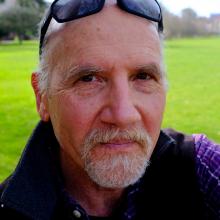The Evolution of a Faculty Learning Community Model to Support Blended Course Design and Teaching


Brief Abstract
This session describes the evolution of a faculty learning community model over a decade: how it evolved from supporting design of reduced-seat-time hybrid courses, to embracing blended learning broadly during the pandemic, and finally to developing faculty resilience and leadership in teaching and building community.
Presenters

Extended Abstract
The Birth
The centerpiece of a hybrid pilot program established in 2011 in a university teaching and learning center was the creation of hybrid faculty learning communities (FLC). These FLCs were offered in a 10-week hybrid format with both asynchronous online learning activities and 5 face-to-face group meetings. At least two hybrid learning communities were facilitated annually with multi-disciplinary cohorts of 6 to 12 instructors. Each FLC member was offered professional development funding for participation and the redesign of an existing campus course as a reduced-seat time hybrid.
FLC activities included synchronous and asynchronous discussions, tech demos, readings, videos, blogging, and use of hybrid course planning tools. Guest presenters included experienced hybrid course instructors and campus tech support staff. Each FLC culminated with a participant showcase of planned hybrid course designs.
From the outset, the FLCs had 5 learning outcomes:
-
Describe recognized effective practices for design and delivery of a hybrid course, for example, methods to foster student engagement in a blended learning environment.
-
Design a hybrid course syllabus and develop course content that employ effective practices for blended learning, such as techniques to integrate online and face-to-face learning activities and materials.
-
Identify campus resources and online resources—such as the OLC and MERLOT—to support hybrid course development and delivery.
-
Recognize and apply policies and procedures applicable to hybrid course development and delivery, such as standards for online course site functionality.
-
Employ fundamental features of the learning management system for course delivery, for example, posting announcements and facilitating online discussions.
The Development
Through the experience of facilitating Hybrid FLCs , seven key factors were identified that support a successful experience: Building swift trust among participants and facilitators, authenticity, iterative sharing, the hybrid format, making space for reflection, providing refreshments, and in some cases providing refuge from participants’ home units.
Over the decade, seventeen of these Hybrid FLCs ultimately served 143 faculty and seeded the development of hybrid courses as a recognized modality in the university’s teaching and learning landscape. The university, which had no official hybrid courses at the outset of the FLCs in 2011, now has 945. The learning communities played a significant role in raising faculty awareness of the potentials of hybrid teaching and learning, and supporting quality hybrid pedagogy.
In the early months of the pandemic, the Spring 2020 Hybrid FLC shifted–along with campus teaching–to a remote mode, utilizing Zoom for synchronous meetings along with asynchronous learning activities in Canvas. Simultaneously a collaboration between the teaching center and academic technologies unit led to a one-time Applying Learning Technology FLC. This collaboration between two units focusing on technology and pedagogy grew. In subsequent terms, starting in Fall 2020, the hybrid FLC and Applying Learning Technology FLC models were merged into a single Blended Faculty Learning Community model. This move was in keeping with the shifting teaching landscape during COVID, and increased emphasis on campus courses blending synchronous learning (Zoom or classroom) with asynchronous learning (Canvas or elsewhere).
Four of these Blended FLCs have been offered using much of the structure of the original Hybrid FLCs but shifting the focus to Derek Bruff’s excellent primer, Intentional Tech. Rather than redesign courses as reduced-seat-time hybrids, each participant works toward solutions–involving blended approaches and improved use of ed tech–to a self-identified teaching challenge. These Blended FLCs have been co-facilitated by personnel from the Academic Technologies, the Teaching and Learning Center, and a senior instructor.
The Future
As of Spring 2022, the Blended FLCs are being reconfigured to emphasize resilient teaching in keeping with the rising focus on the need to support faculty and student well-being and resilience in the wake of the vast disruptions in higher ed in the past two years and a teaching environment that has not fully settled. The Resilient Teaching FLCs will stress sustainability of teaching practices and teaching careers in shifting terrain of higher education today and in the future.
Relevance/Importance to OLC Community
Following the gradual shift toward hybrid instruction in higher education during the past two decades, the pandemic era has brought about a rapid acceleration in the development and delivery of hybrid courses. As hundreds of colleges and universities have moved “back” to more on-campus instruction in 2021-22, there is far more interest than before in blended instruction and demand for faculty development to support blended course design and teaching. This session will tell the story of how one university has supported blended faculty development through faculty learning communities.
Plan for Interactivity
Attendees will be engaged through use of Jamboard, discussion, and Q&A to compare and contrast various institutional approaches to supporting hybrid course design and teaching, blended learning, and resilient teaching.
What Attendees Will Learn/Takeaways
This session is relevant to teaching faculty, instructional designers/technologists, faculty developers and administrators. Participants will come away with specific lessons about faculty development that we’ve learned from a decade of organizing and facilitating FLCs. They will also learn ways that FLCs can evolve to meet the changing needs of teaching faculty in an ever-shifting, dynamic environment.


